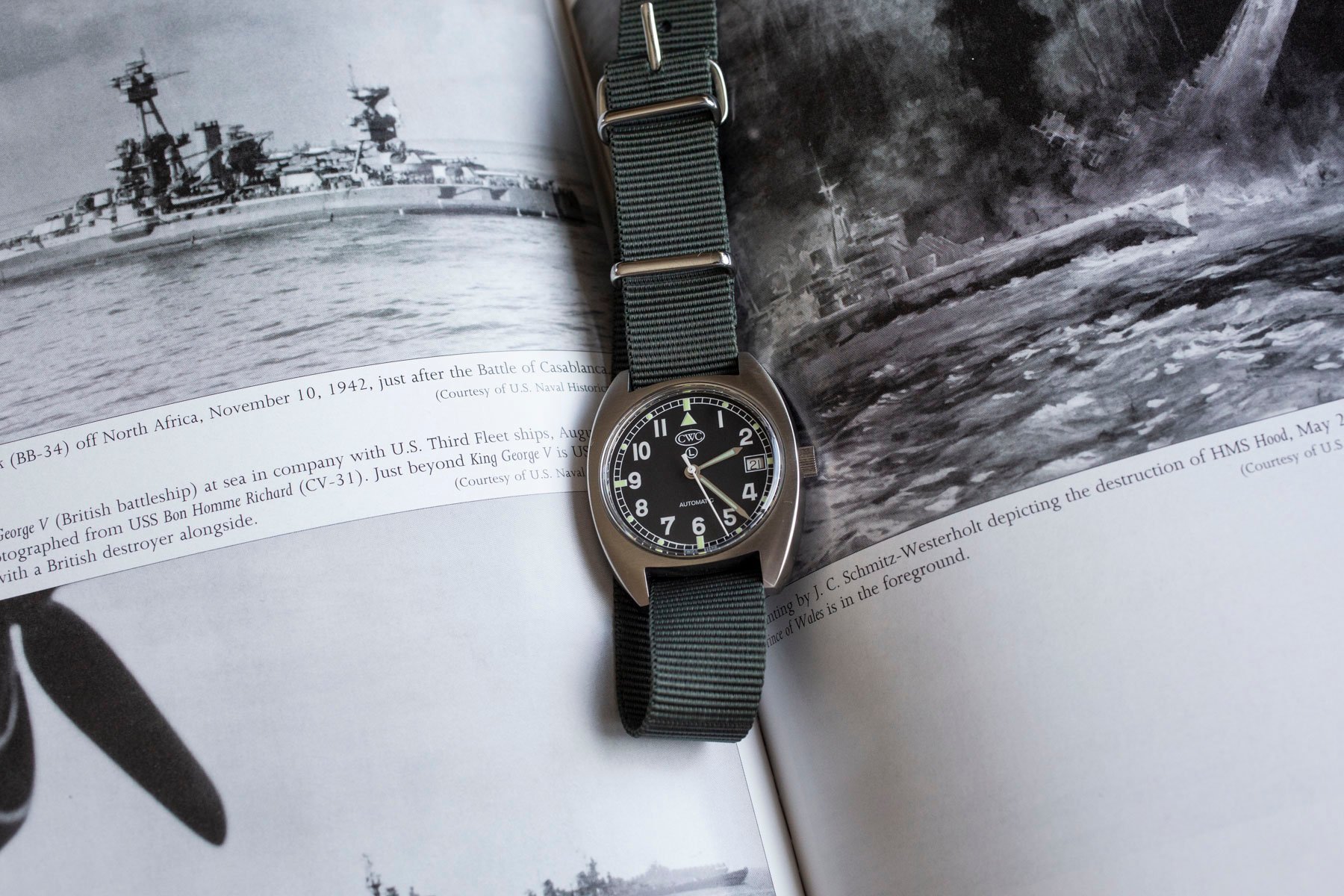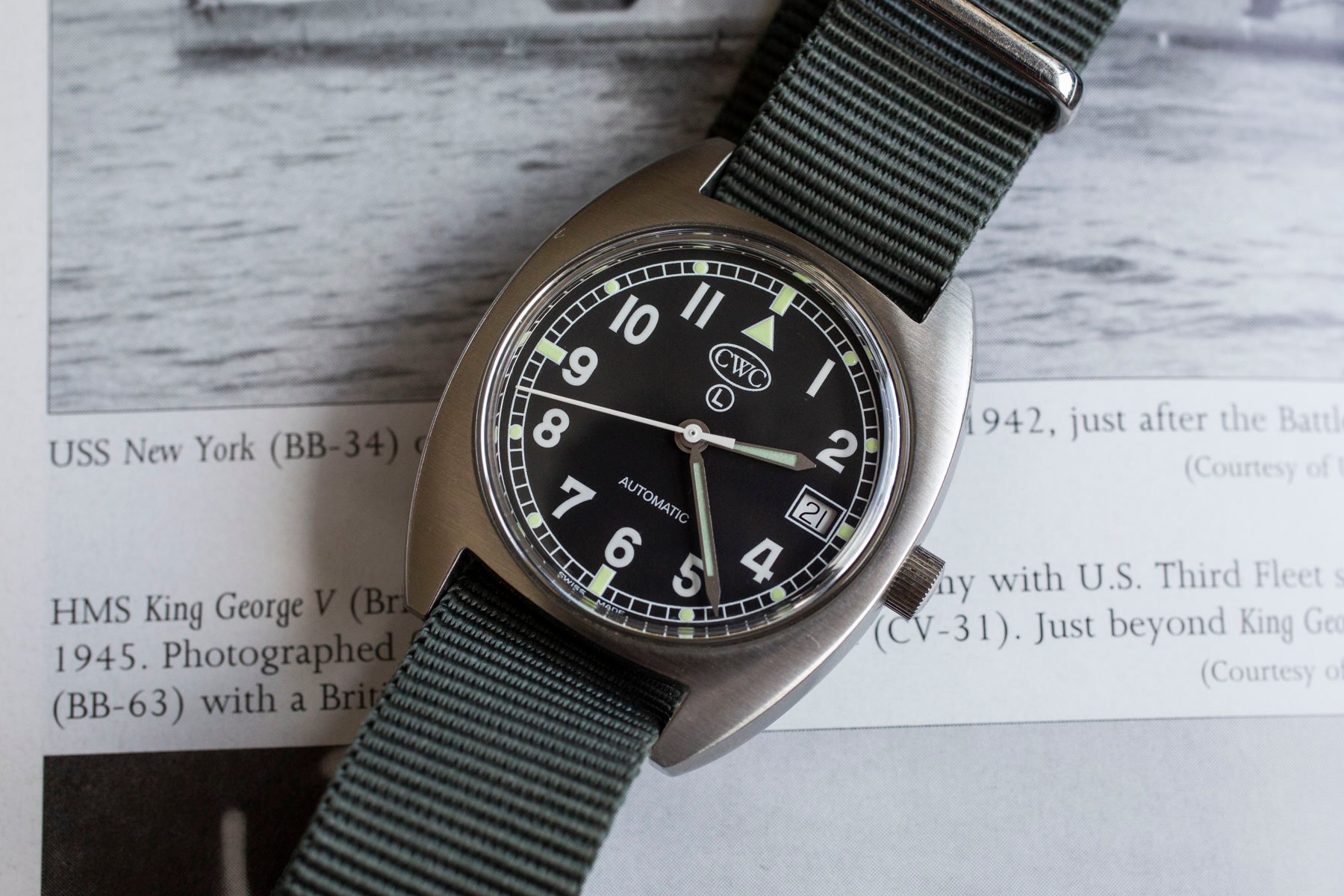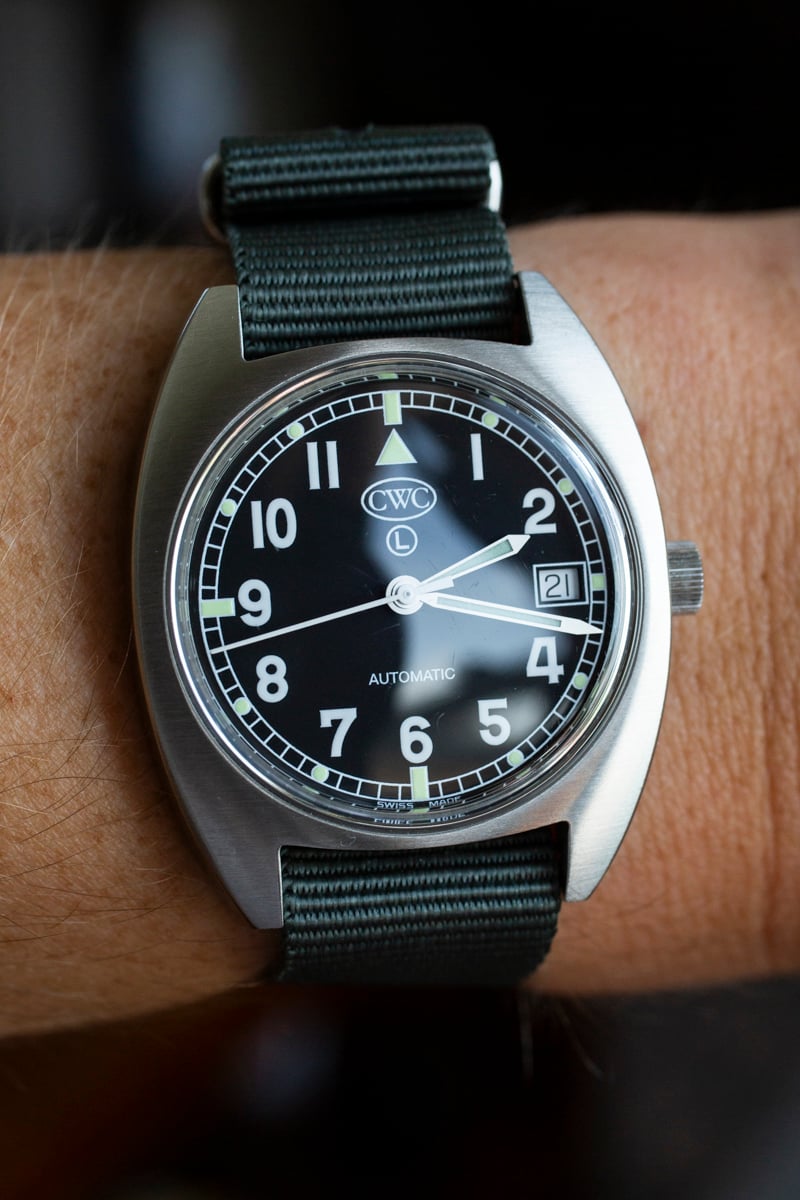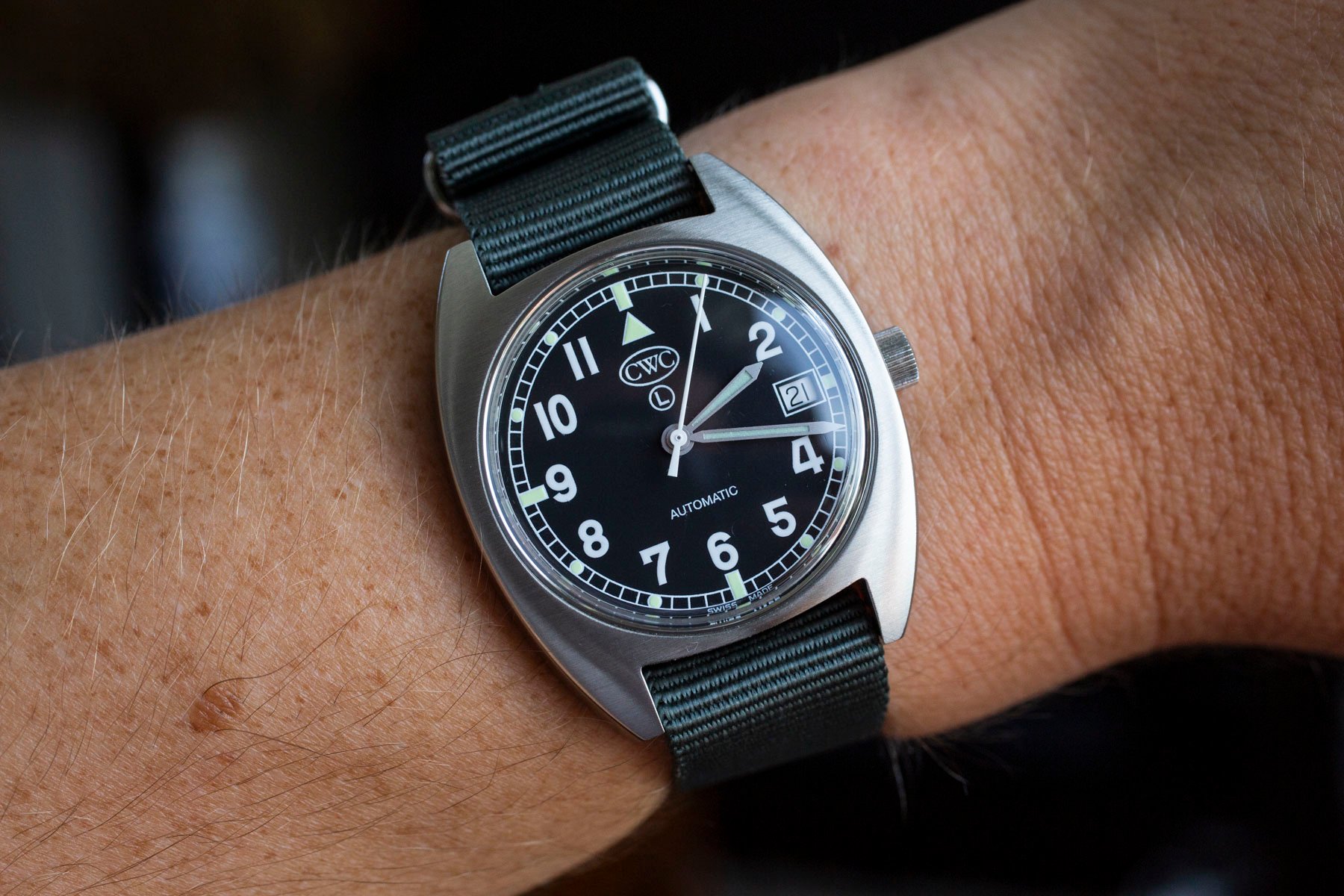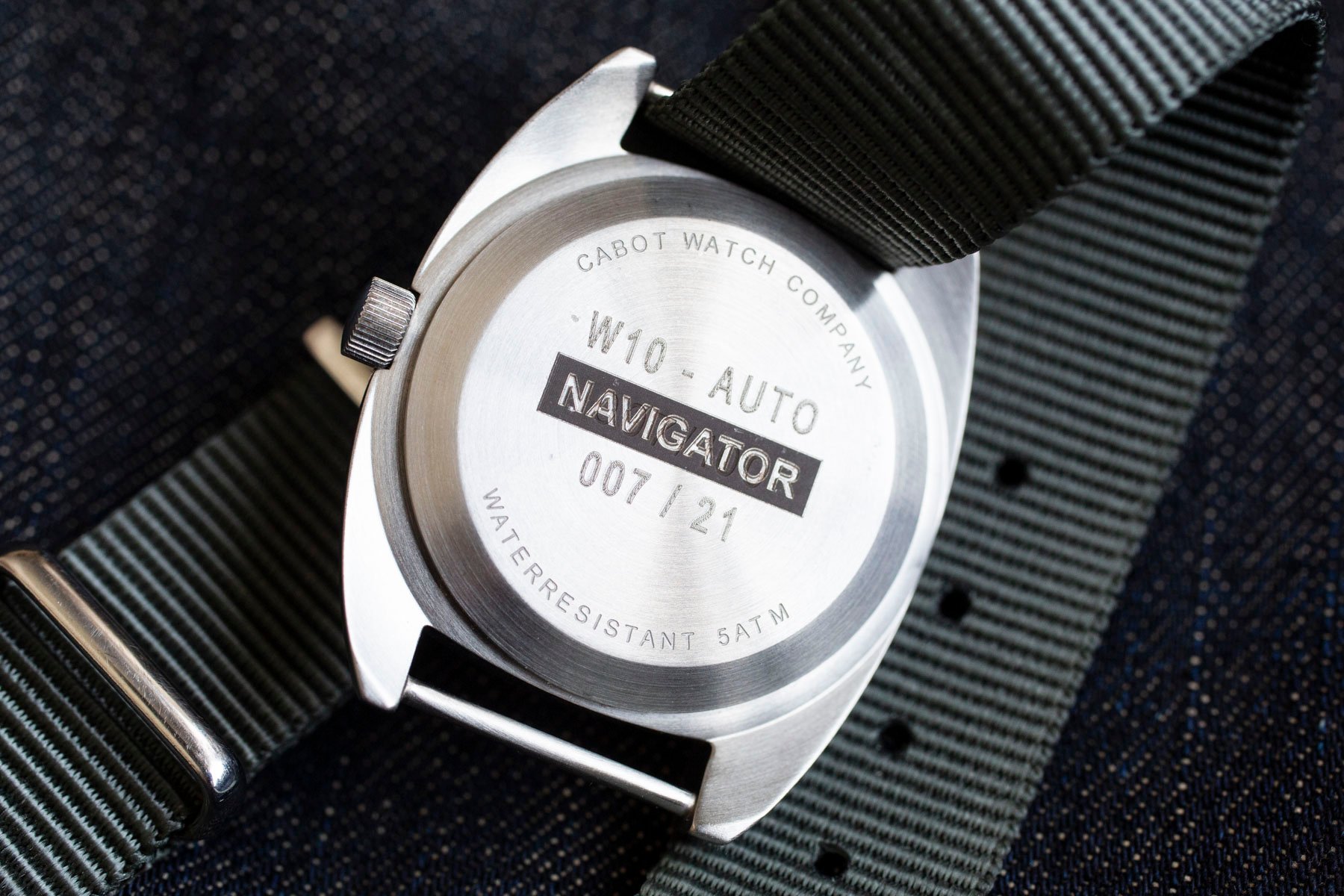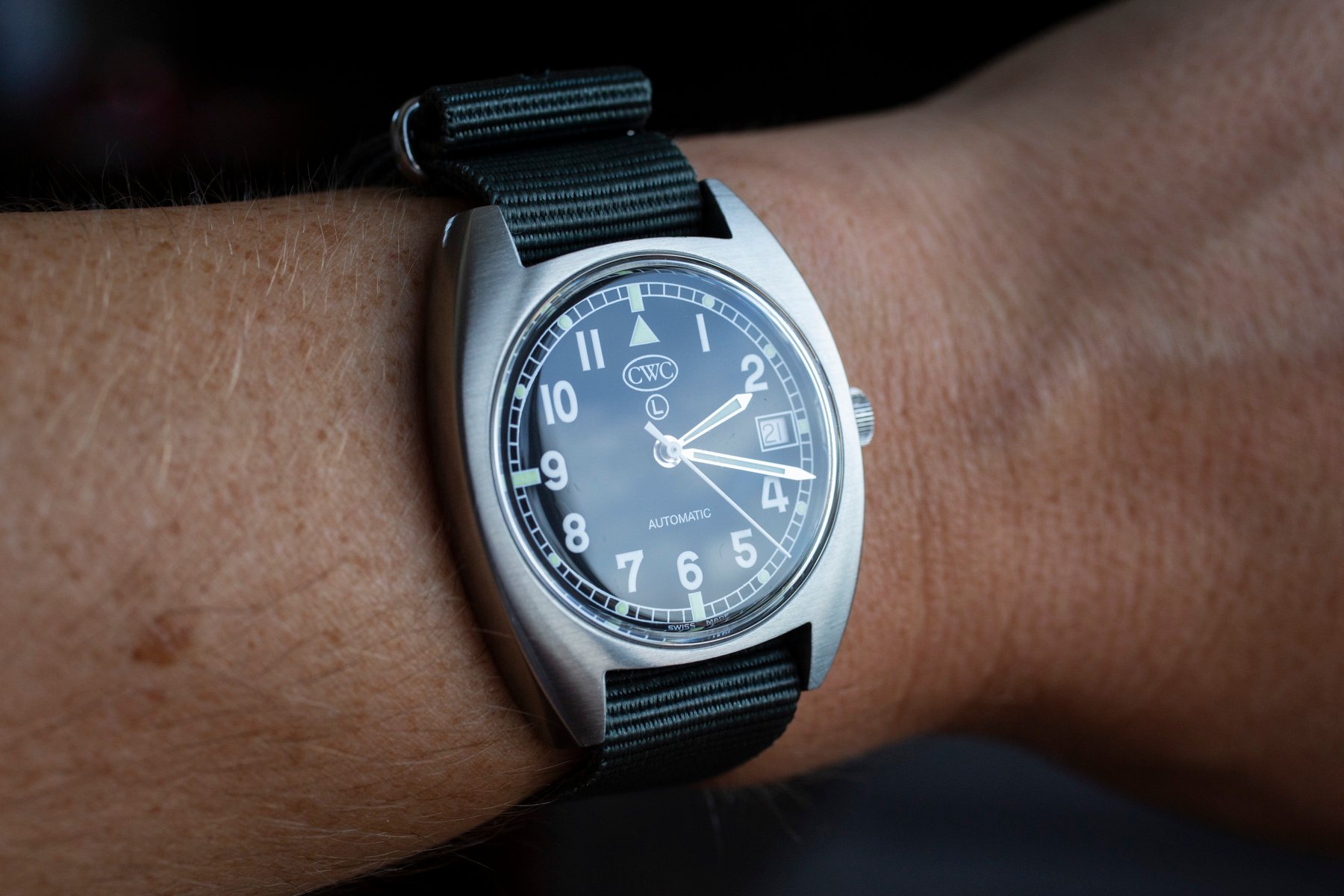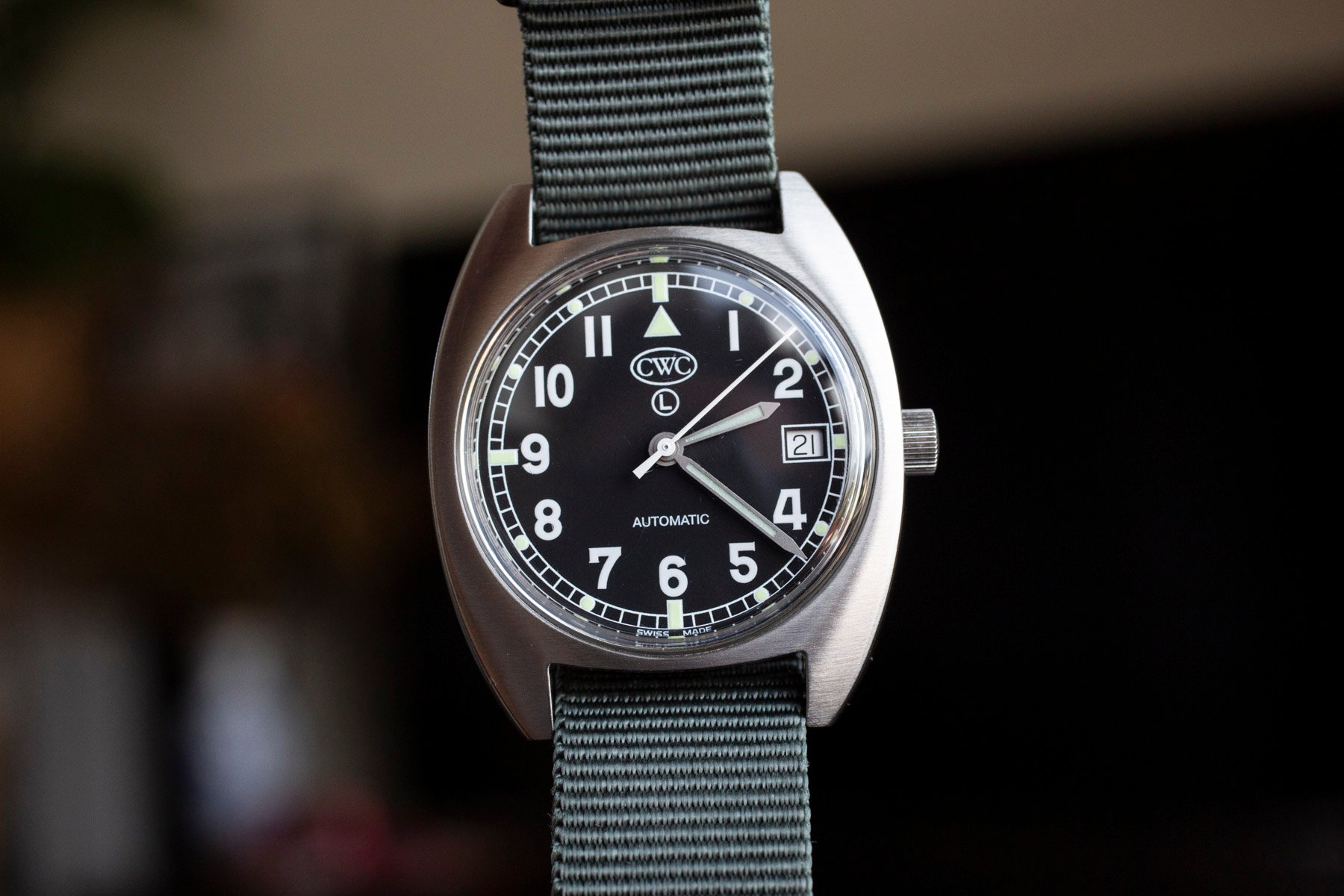Hands-On: Spending Time With The CWC W10 Navigator
I am fond of Cabot Watch Company, also known as CWC. It is a no-nonsense British watch brand that has focused on tool-watch designs since the early 1970s. Something about the design ethos of CWC reminds me of the golden epoch of 20th-century mechanical watchmaking. Today, we’ll look at the CWC W10 Navigator Automatic General Service Watch.
When I think of a watch, sometimes I imagine a scenario or narrative that accompanies it. This reflects the watch’s “vibe” and gives it a story. When writing about the vintage Certina DS-2, a scene of a dock in Sweden came to mind (Certina, for example, was historically popular in that part of the world). With the CWC W10 Navigator, I don’t have to imagine too much what sort of scenario a watch of this ilk might experience. Its forebears served extensively in the British military.
If those watches could tell stories, I wonder what insights they would give us. Ray Mellor founded CWC in the early 1970s. Mellor had been the representative for Hamilton in the United Kingdom until the brand shuttered its business there. Mellor decided to establish a company of his own and maintain the military contracts that Hamilton had once had for rugged, hardy watches.
CWC’s humble British beginnings
Inspired by the explorer and adventurer John Cabot, Mellor called this brand Cabot Watch Company. CWC went on to have a fruitful relationship with the British military and various government organizations. These relationships included providing mechanical Valjoux-powered chronographs to the BBC for its reporters as well as a range of automatic and then quartz dive watches for the Royal Navy and Special Boat Service (SBS). The brand had a successful stint, issuing a range of pilot, dive, and field watches. Today, it’s owned by Silvermans in the UK, a business specializing in supplying military surplus goods.
The first watch that Mellor’s company sold to the British MoD was the W10. Hamilton had made the W10 before leaving the UK, and since the need for a hardy field watch was still there, CWC continued making it. The W10 was a highly legible time-only watch housing a mechanical hand-wound movement inside a 38mm case. However, these watches feel larger on the wrist because of the case’s tonneau shape.
Looking at the CWC W10 Navigator
Today’s hands-on is with CWC’s W10 Navigator. It’s a “what if?” design incorporating modern elements into the traditional W10 (now sold as the Mellor-72). These include a date complication and automatic movement. In essence, though, the Navigator retains the essential form factor of the original W10 from the 1970s.
This 1970s form factor is a good thing, particularly if you like “vintage” designs, which are still very much in vogue. The handsome Arabic numerals retain the font of the original, which includes a flat-topped “4” and a hooked “7”. This impressive attention to detail speaks volumes about modern CWC’s commitment to the company’s heritage. Meanwhile, the railroad track marking the minutes and seconds is crisp and interspersed every five steps with a luminous marker.
A simple rectangle of white paint borders the date, which is nicely nestled at 3 o’clock.”Automatic,” an encircled “L” (for Luminova), and an encircled “CWC” are the only text on the dial besides a small “Swiss Made,” which straddles either side of the 6 o’clock marker. The “L” stands in for what was once a “T” for tritium. The seconds hand is coated white, whereas the minute and hour hands are a dull metal that encases slithers of Luminova. This combination of elements creates a very legible overall design, and the Luminova’s performance is adequate.
The CWC W10 Navigator is a legibility monster
The W10’s case measures 38mm wide, 11mm thick, and 42mm long. Looking neatly and nicely brushed as you look down on the watch from a bird’s eye view. The small crown is easy to grip, and the winding action is smooth enough. Inside beats a Sellita SW200-1, an approachable mechanical workhorse for this watch. One thing I did notice almost immediately was the sound of the winding rotor as I moved my wrist. It’s not too loud, but it certainly is noticeable. Though it may bug some wearers, it doesn’t bother me.
The case back, reflecting the overall vibe of CWC, is also quite plain, stating “W10,” “Auto,” and “Navigator” in the center. There’s not much to see here. Fixed strap bars mean you will be stuck with straps that can accommodate this feature. This is not too limiting since 18mm NATO straps look particularly handsome on this simple, no-nonsense design. I prefer single-pass nylon straps for less bulk. That said, with this watch’s smaller size, even a traditional NATO won’t make it seem notably bulky.
Using a Hesalite crystal creates a degree of legibility that I wasn’t entirely used to with watches that use modern sapphire crystal. There is a warmness to Hesalite, which is enthralling. You could put the CWC down to being another “boring” field watch, but there is much more here than meets the eye. This is the sort of watch that would still be made today as if the Quartz Crisis had never happened. And for that, it is an intriguing timepiece.
Final thoughts
CWC watches compete in a space replete with solid competitors. Brands like Serica and Formex provide well-crafted, attractive takes on field watches for less than €1,000. Then there are options from Seiko and Citizen, which also spring to mind for less than half that. But there is also something to be said for the military heritage that CWC commands with this design.
While not a 1:1 copy of the original W10, it retains the design and spirit of that watch worn by the British military. For £499.17 (excluding taxes), you get a lot of history, even if competitors out there provide better features in the price range. If you are looking for a military watch with legibility, history, and a degree of practicality, looking into the CWC W10 Navigator is worth your time.
Fratelli, what do you think of this CWC? Let me know in the comments.

